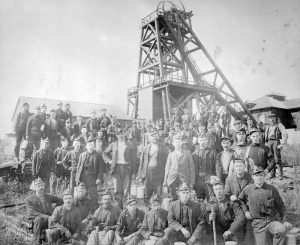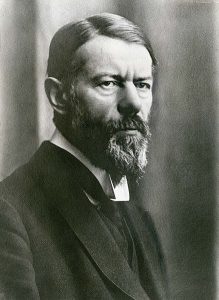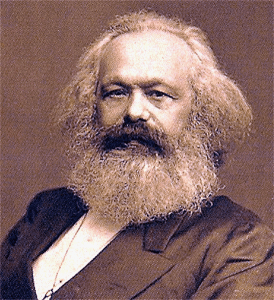8.1 Systems of Stratification

Learning Outcomes
By the end of this chapter, you’ll be able to:
- Analyze social differentiation and social stratification as components of social inequality.
- Define the difference between equality of opportunity and equality of condition.
- Compare caste and class systems.
- Distinguish between Marx and Weber’s approaches to class and status.
Introduction
Sociologists distinguish between two types of stratification systems. Closed systems accommodate little change in social position. They do not allow people to shift levels and do not permit social relations between levels. Open systems, which are based on achievement, allow movement and interaction between layers and classes. The different systems also produce and foster different cultural values, like the values of loyalty and traditions versus the values of innovation and individualism. The difference in stratification systems can be examined by the comparison between class systems and caste systems.
The Caste System

Caste systems are closed stratification systems in which people can do little or nothing to change their social standing. A caste system is one in which people are born into their social standing and remain in it their whole lives. It is based on fixed or rigid status distinctions, rather than economic classes per se.
As noted above, status is defined by the level of honour or prestige one receives by virtue of membership in a group. Sociologists make a distinction between ascribed status: a status one receives by virtue of being born into a category or group (e.g., caste, hereditary position, gender, race, ethnicity, etc.), and achieved status: a status one receives through individual effort or merits (e.g., occupation, educational level, moral character, etc.). Caste systems are based on a hierarchy of ascribed statuses, because people are born into fixed caste groups. A person’s occupation and opportunity for education follow from their caste position.
In a caste system, people are assigned roles regardless of their individual talents, interests, or potential. Marriage is endogamous (from endo- ‘within’ and Greek gamos ‘marriage’) which means marriage between castes is forbidden, whereas exogamous marriage is a marriage union between people from different social groups. There are virtually no opportunities to improve one’s social position. Instead, the relationship between castes is bound by institutionalized rules, and highly ritualistic procedures come into play when people from different castes come into contact. People value traditions and often devote considerable time to perfecting the details of ritualistic procedures.
The feudal systems of Europe and Japan can, in some ways, be seen as caste systems in that the statuses of positions in the social stratification systems were fixed, and there was little or no opportunity for movement through marriage or economic opportunities. In Europe, the feudal estate system divided the population into clergy (first estate), nobility (second estate), and commoners (third estate), which included artisans, merchants, and peasants. In early European feudalism, it was still possible for a peasant or a warrior to achieve a high position in the clergy or nobility, but later the divisions became more rigid. In Japan, between 1603 and 1867, the mibunsei system divided society into five rigid strata in which social standing was inherited. At the top was the Emperor, then court nobles (kuge), military commander-in-chief (shogun), and land-owning lords (daimyo). Beneath them were four classes or castes: the military nobility (samurai), peasants, craftsmen, and merchants. The merchants were considered the lowest class because they did not produce anything with their own hands. There was also an outcast or untouchable caste known as the burakumin, who were considered impure or defiled because of their association with death: executioners, undertakers, slaughterhouse workers, tanners, and butchers (Kerbo, 2006).
The caste system in India from 4,000 years ago until the 20th century probably best typifies the system of stratification. In the Hindu caste tradition, people were expected to work in the occupation of their caste and enter into marriage according to their caste. Originally there were four castes: Brahmans (priests), Kshatriyas (military), Vaisyas (merchants), and Sudras (artisans, farmers). There were also the Dalits or Harijans (“untouchables”). Hindu scripture said, “In order to preserve the universe, Brahma (the Supreme) caused the Brahmin to proceed from his mouth, the Kshatriya to proceed from his arm, the Vaishya to proceed from his thigh, and the Shudra to proceed from his foot” (Kashmeri, 1990).
Accepting this social standing was considered a moral duty. Cultural values and economic restrictions reinforced the system. Caste systems promote beliefs in fate, destiny, and the will of a higher power, rather than promoting individual freedom as a value. A person who lives in a caste society is socialized to accept their social standing, and this is reinforced by the society’s dominant norms and values.
Although the caste system in India has been officially dismantled, its residual presence in Indian society is deeply embedded. In rural areas, aspects of the tradition are more likely to remain, while urban centres show less evidence of this past. In India’s larger cities, people now have opportunities to choose their own career paths and marriage partners. As a global centre of employment, corporations have introduced merit-based hiring and employment to the nation. The caste system has been largely replaced by a class system of structured inequality. Nevertheless, Dalits continue to experience violence and discrimination in hiring or obtaining business loans (Jodhka, 2018).
The Class System

A class system is based on both socio-economic factors and individual achievement. It is at least a partially open system. A class consists of a set of people who have the same relationship to the means of production or productive property — that is, to the things used to produce the goods and services needed for survival, such as tools, technologies, resources, land, workplaces, etc. In Karl Marx’s (1848) analysis, class systems form around the institution of private property, dividing those who own or control productive property from those who do not, who survive on the basis of selling their labour. In capitalist societies, for example, the dominant classes are the capitalist class and the working class.
In a class system, social inequality is structural, meaning it is built into the organization of the economy. The relationship to the means of production (i.e., ownership/non-ownership) defines a persistent, objective pattern of social relationships that exists independently of individuals’ personal or voluntary choices and motives.
Unlike caste systems, however, class systems are open in the sense that individuals are able to change class position. Individuals are at least formally free to gain a different level of education or occupation than their parents. They can move up and down within the stratification system. They can also socialize with and marry members of other classes, allowing people to move from one class to another. In other words, individuals can move up and down the class hierarchy, even while the class categories and the class hierarchy itself remain relatively stable. It is not impossible for individuals to pass back and forth between classes through social mobility, but the class structure itself remains intact, structuring people’s lives, privileges, wealth, and social possibilities.
Social Class

Social class is both obvious and not so obvious in Canadian society. It is based on subjective impressions, outward symbols, and less visible structural determinants. Can one tell a person’s education level based on clothing? Is opening an $80 bottle of wine for dinner normal and routine, an exceptional occasion, or a ridiculous waste of money? Can one guess a person’s income by the car they drive? There was a time in Canada when people’s class was more visibly apparent. In some countries, like the United Kingdom, class differences can still be gauged by differences in schooling, lifestyle, and even accent. In Canada, however, it is harder to determine class from outward appearances.
For sociologists, too, categorizing class is a fluid science. One debate in the discipline is between Marxist and Weberian approaches to social class (Abercrombie & Urry, 1983).
Karl Marx
Marx’s analysis emphasizes a historical materialist approach to the underlying structures of the capitalist economy. Classes are historical formations that distribute people into categories based on the organization and structure of the economy. Marx’s definition of social class rests essentially on one materialist variable: a group’s relation to the means of production (ownership or non-ownership of productive property or capital). Therefore, in Marxist class analysis, there are two dominant classes in capitalism — the working class and the owning class — and any divisions within the classes based on occupation, status, education, etc. are less important than the tendency toward increasing separation and polarization of these two classes.
Max Weber
Weber defined social class slightly differently, as the life chances one shares in common with others by virtue of possession of property, goods, skills or opportunities for income (1969). Life chances refer to the ability or probability of an individual to act on opportunities and attain a certain standard of living. Owning property or capital, or not owning property or capital, is still the basic variable that defines a person’s class situation or life chances. However, class position is defined with respect to markets rather than the process of production. It is the value of one’s capital, products or skills in the commodity or labour markets at any particular time that determines whether one has greater or fewer life chances.
This yields a model of class hierarchy based on multiple gradations of socio-economic status, instead of a division between two principal classes. Analyses of class inspired by Weber tend to emphasize gradations of status relating to several variables like wealth, income, education, and occupation. Class stratification is not just determined by a group’s economic position, but by the prestige of the group’s occupation, education level, consumption, and lifestyle. It is a matter of status — the level of honour or prestige one holds in the community by virtue of one’s social position — as much as a matter of class.
Based on the Weberian approach, some sociologists talk about upper, middle, and lower classes (with many subcategories within them) in a way that mixes status categories with class categories. These gradations are often referred to as a group’s socio-economic status (SES): their social position relative to others based on income, education, and prestige of occupation. For example, although plumbers might earn more than high school teachers and have greater “life chances” in a particular economy, the status division between blue-collar work (people who “work with their hands”) and white-collar work (people who “work with their minds”) means the plumbers might be characterized as lower middle class but teachers as middle class.
There is a randomness in the division of classes into upper, middle, and lower in the Weberian model. However, this manner of classification based on status distinctions captures something about the subjective experience of class and the shared lifestyle and consumption patterns of class that Marx’s categories often do not. An NHL hockey player receiving a salary of $6 million a year is a member of the working class, strictly speaking. He might even go on strike or get locked out according to the dynamic of capital and labour conflict described by Marx. Nevertheless, it is difficult to see what the life chances of the hockey player have in common with a landscaper or receptionist, despite the fact that they might share a common working-class background.
Class: Materialist and Interpretive Factors
Social class is a complex category to analyze. It has both a strictly materialist quality relating to a group’s structural position within the economic system, and an interpretive quality relating to the formation of status gradations, common subjective perceptions of class, differences of power in society, and class-based lifestyles and consumption patterns. Considering both the Marxist and Weberian models, social class has at least three objective components: a group’s position in the occupational structure (i.e., the status and salary of one’s job), a group’s position in the power structure (i.e., who has authority over whom), and a group’s position in the property structure (i.e., ownership or non-ownership of capital). It also has an important subjective component that relates to recognitions of status, distinctions of lifestyle, and ultimately how people perceive their place in the class hierarchy.
Making Connections: Classic Sociologists
Marx and Weber on Social Class: How Do They Differ?
Often, Marx and Weber are perceived as at odds in their approaches to class and social inequality, but it is perhaps better to see them as articulating different styles of analysis.

Weber’s analysis presents a more complex model of the social hierarchy of capitalist society than Marx. Weber’s model goes beyond the economic structural class position to include the variables of status (degree of social prestige or honour) and power (degree of political influence). Thus, Weber provides a multi-dimensional model of social hierarchy. As a result, although individuals might be from the same objective class, their position in the social hierarchy might differ according to their status and political influence. For example, women and men might be equal in terms of their class position, but because of the inequality in the status of the genders within each class, women (as a group) remain lower in the social hierarchy.
With respect to class specifically, Weber also relies on a different definition than Marx. As noted above, Weber (1969) defines class as the “life chances” one shares in common with others by virtue of one’s possession of goods or opportunities for income. Class is defined with respect to markets, rather than the process of production. As in Marx’s analysis, the economic position that stems from owning property and capital, or not owning property and capital, is still the basic variable that defines one’s class situation or life chances. However, as the value of different types of capital or property (e.g., industrial, real estate, financial, etc.), or the value of different types of opportunity for income (i.e., different types of marketable skills), varies according to changes in the commodity or labour markets, Weber can provide a more nuanced description of an individual’s class position than Marx.
On one hand, Weber’s analysis is descriptive rather than analytical. It can provide a useful description of differences between the levels or “strata” in a social hierarchy or stratification system but does not provide an analysis of the formation of classes themselves. On the other hand, Marx’s analysis of class is essentially one-dimensional. It has one variable: the relationship to the means of production. If one is a professional hockey player, a doctor in a hospital, or a clerk in a supermarket, one works for a wage and is therefore a member of the working class. In this regard, his analysis challenges common sense, as the difference between these different “fragments” of the working class seems paramount — at least from the point of view of the subjective experience of class. It would seem that hockey players, doctors, lawyers, professors, and business executives have very little in common with grocery clerks, factory or agricultural workers, tradespeople, or low-level administrative staff, despite the fact that they all depend on being paid wages by someone.

However, the key point of Marx’s analysis is not to ignore the existence of status distinctions within classes, but to examine class structure dialectically in order to provide a more comprehensive and historical picture of class dynamics.
The four components of dialectical analysis were described in Chapter 1. An Introduction to Sociology: (1) Everything in society is related; (2) everything is caught up in a process of change; (3) change proceeds from the quantitative to the qualitative; and (4) change is the product of oppositions and struggles in society. These dialectical qualities are also central to Marx’s account of the hierarchical structure of classes in capitalist society.
With regard to the first point — everything in society is related — the main point of the dialectical analysis of class is that the working class and the owning class have to be understood in a structural relationship to one another. They emerged together out of the old class structure of feudalism. More significantly for Marx, each exists only because the other exists. The wages that define the wage labourer are paid by the capitalist; the profit and capital accumulated by the capitalist are products of the workers’ labour.
In Marx’s dialectical model, “everything is caught up in a process of change” occurs because the system is characterized by the struggle of opposites. The classes are structurally in conflict because the contradiction in their class interests is built into the economic system. The bourgeoisie as a class is defined by the economic drive to accumulate capital and increase profit. The key means to achieve this in a competitive marketplace is by reducing the cost of production by lowering the cost of labour (by reducing wages, moving production to lower wage areas, or replacing workers with labour-saving technologies). This conflicts with the interests of the proletariat who seek to establish a sustainable standard of living by maintaining their level of wages and employment in society. While individual capitalists and individual workers might not see it this way, structurally, their class interests clash and define a persistent pattern of management-labour conflict and political cleavage in modern, capitalist societies.
So, from the dialectical model, Marx can predict that the composition of classes changes over time: the statuses of different occupations vary, the proportions between workers’ income and capitalists’ profit change, and the types of production and the means of production change (through the introduction of labour-saving technologies, globalization, new products and consumption patterns, etc.). In addition, change proceeds from the quantitative to the qualitative, in the sense that the multiplicity of changes in purely quantitative variables like salary, working conditions, unemployment levels, rates of profitability, product sales, supply and demand, etc., lead to changes in qualitative variables like the subjective experience of inequality and injustice, the political divisions of “left” and “right,” the formation of class-consciousness, and eventually change in the entire economic system through new models of capital accumulation or even revolution.
The strength of Marx’s analysis is its ability to go beyond a description of where different groups fit within the class structure at a given moment in time to an analysis of why those groups and their relative positions change with respect to one another. The dialectical approach reveals the underlying logic of class structure as a dynamic system, and the potential commonality of interests and subjective experiences that define class-consciousness. As a result, in an era in which the precariousness of many high status “middle class” jobs has become clearer, the divisions of economic and political interests between the different segments of the working class became less.
Media Attributions
- Red Sand © Pixabay used under license via Pexels.
- A Woman Working in a Field © Sankha Subhra Bhattacharjee used under license via Pexels
- Group of Nanaimo coal miners at the pithead © British Columbia Archives is licensed under a Public Domain license
- James and Laura Dunsmuir in Italian Garden at Hatley Park © Dunsmuir Family is licensed under a Public Domain license
- Max Weber, 1918 © Ernst Gottmann is licensed under a Public Domain license
- Karl Marx © John Jabez Edwin Mayall is licensed under a Public Domain license

